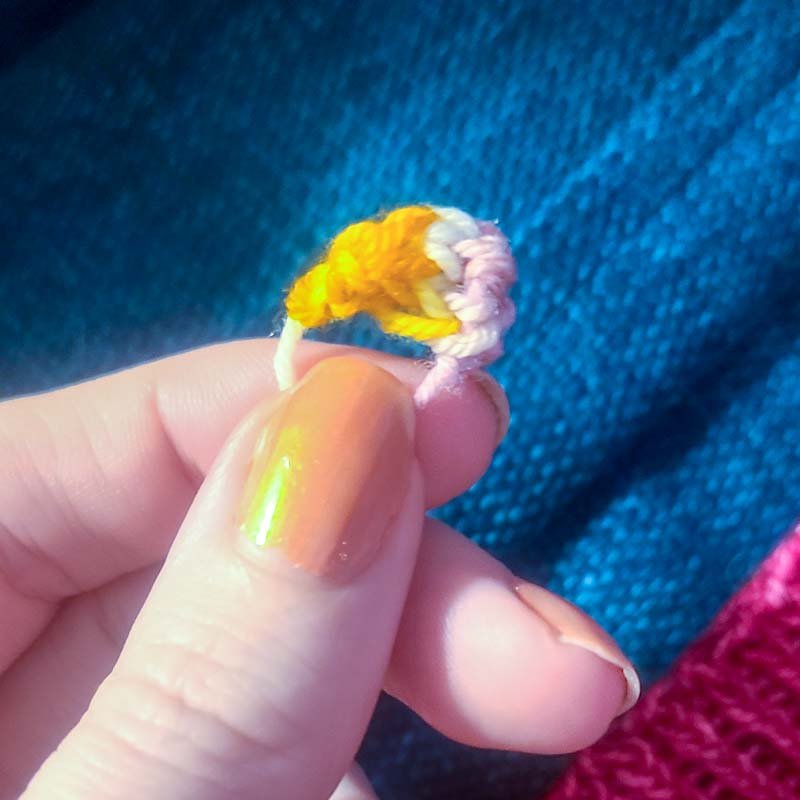Attaching a Missed Bobble, or, Why I Take Knitting Classes
A few weeks back I took a couple classes from Vogue Knitting Live’s virtual workshops. I selected both of the classes I took because they promised to help me further develop my practical knitting skills – Beginning Spinning with Amanda Solomon I hoped would help me figure out why my attempts and spindle spinning always seem to end in frustration, and Amy Snell’s Fixing a World of Woes with Duplicate Stitch promised, among other skills that it would demonstrate how to fix cables using duplicate stitch, something I didn’t even know was possible.
A few days after I took those classes, I was finishing up my La Prairie sweater (Instagram post here) , when I discovered I’d missed a bobble on the sleeve, several rows back.
Where my fingernail is? There’s supposed to be a bobble there.
My go -to knitting fix for years has been dropping down to the mistake, fixing it, and laddering back up – but that clearly wouldn’t work to add in an entire bobble, as there wouldn’t be enough yarn to add in all those extra stitches. Mistake fix number two is the dreaded rip back — except, I suddenly realized, I have a new mistake fix, I could just duplicate stitch the bobble!
I worked up a replacement bobble on my needle, sewed it in place, and the problem was easily solved. Technically it wasn’t exactly duplicate stitch since I knit it separately (primarily because I was worried I would warp the existing stitches if I tried to work the bobble right on the fabric), but it was the concept I had learned in Amy Snell’s class – that you have more options for fixing mistakes in your knitting than just dropping down or ripping back – that helped me hit on making a sewn on bobble so quickly.
Captions for gallery: photos of a small bobble in process on a pair of wooden knitting needles, a finished bobble off the needle, and the bobble sewn in place on a knitted sweater.
In the end, the reason I find taking classes and learning new things so valuable is that you don’t just learn practical steps, even though both of my classes did help with that– in the spinning class, I had definitely been starting my spindles in a way that was making it much harder than it needed to be, and the cable fix in the duplicate stitch was as amazing and useful as it sounded. But the true value I found in both classes, and really the value I get any time I take a class or workshop, be it in fiber arts, a business development workshop in my tech editor group, a dance class, etc., is how both classes helped me get out of my current thinking about knitting and spinning, and consider different ways of approaching both.
Have you taken a good class lately that changed how you thought about something that wasn’t covered in the class?




